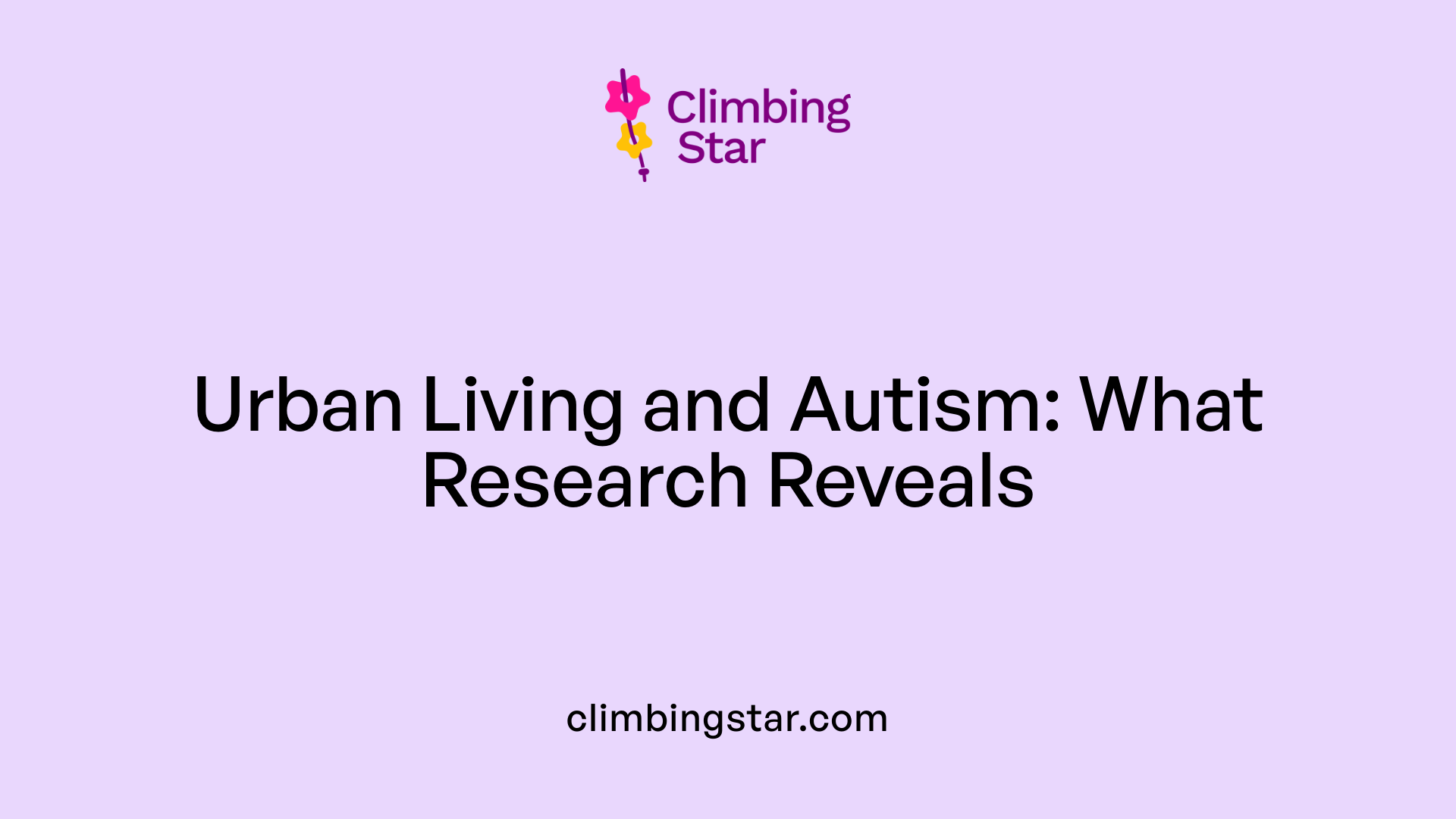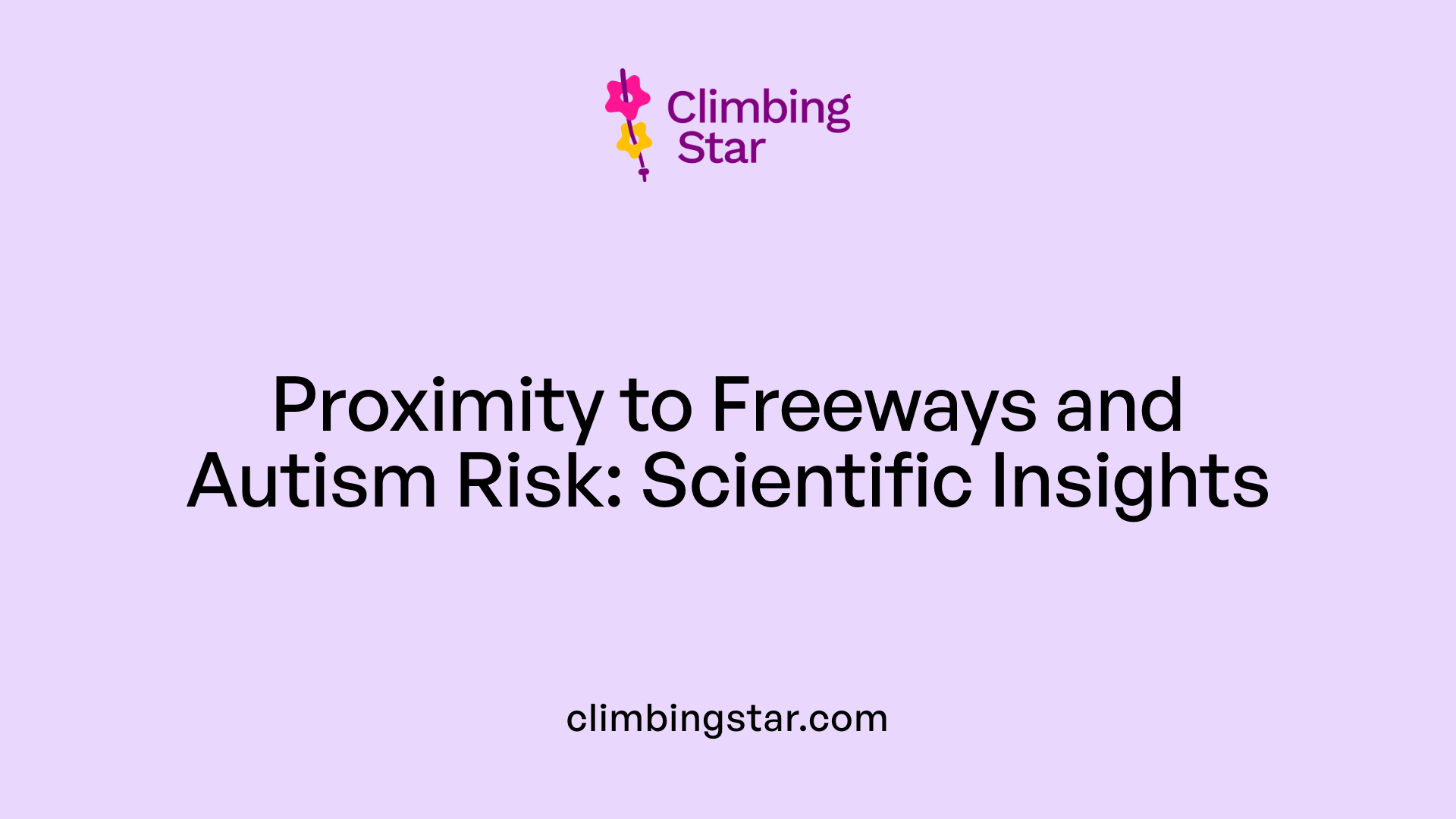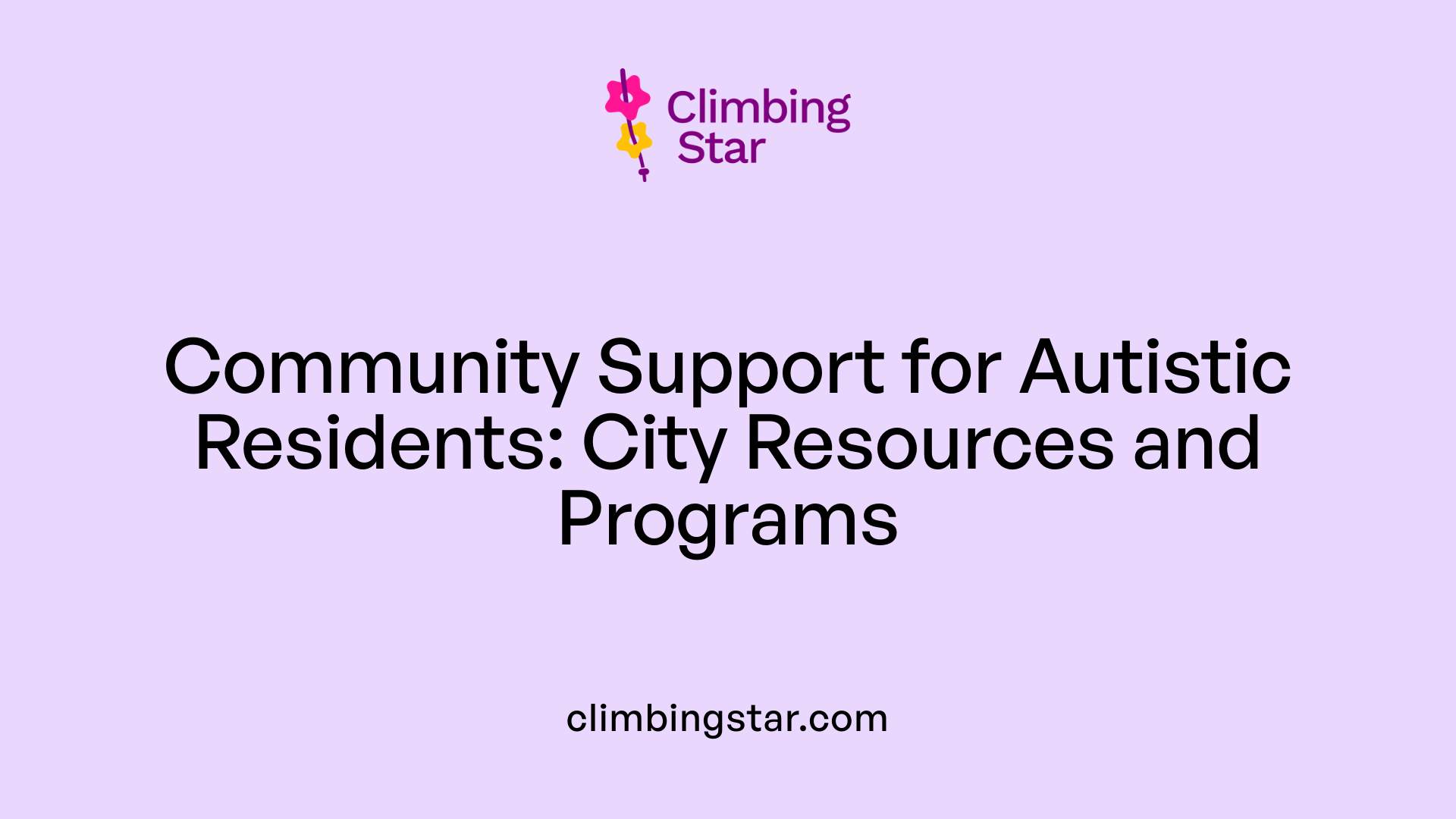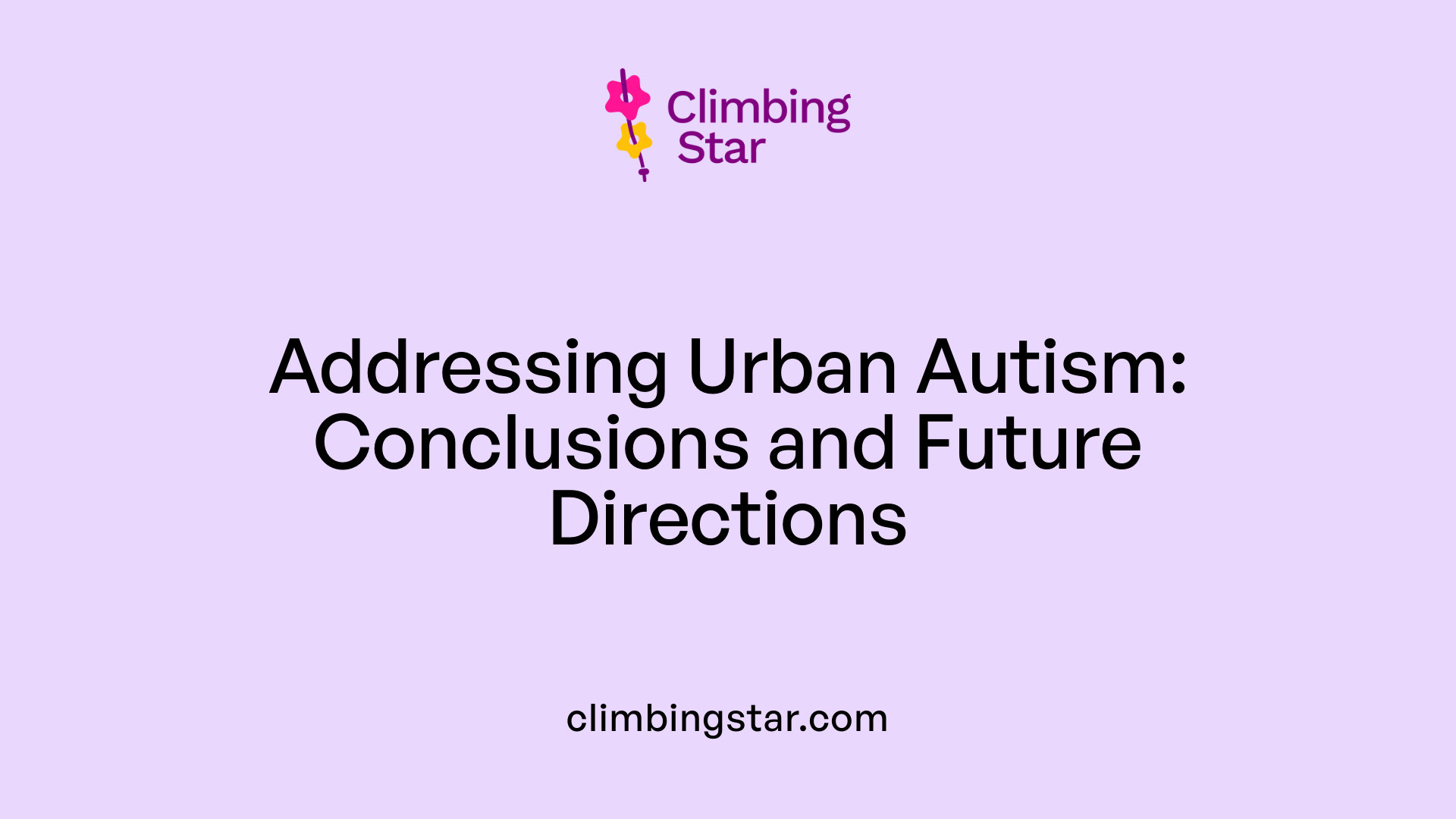Understanding Autism and Environmental Factors
Autism spectrum disorder (ASD) is primarily caused by differences in brain development. While genetics play a significant role, environmental factors encountered during prenatal and early childhood stages also influence autism risk. This article explores whether city living contributes to autism, examining scientific research on environmental exposures, social factors, and available support systems for autistic individuals.
Environmental Factors Influencing Autism Risk
What environmental factors are believed to influence the risk of autism spectrum disorder?
Research suggests that exposure to certain environmental factors during pregnancy and early childhood can affect the likelihood of developing ASD. Pesticides, heavy metals like lead and mercury, and traffic-related air pollution are notable contributors. For instance, children born to mothers living near freeways have shown increased autism risk, likely due to pollutants that induce inflammation and oxidative stress in the developing brain.
In addition to pollutants, maternal health plays a role. Conditions such as infections, metabolic issues, diabetes, and obesity during pregnancy can influence neurodevelopment. Prenatal medication use, including antiepileptic drugs, and proper nutritional intake like folic acid may also impact risk levels.
Biological mechanisms involved include inflammation, oxidative stress, and epigenetic modifications. These processes can disrupt normal brain development and function, potentially leading to ASD. For example, inflammation from environmental toxins might alter gene expression or promote neural damage.
Genetic factors interact with environmental exposures. Advanced parental age, especially paternal age, increases the chance of de novo mutations that can contribute to ASD. Birth complications—such as hypoxia or prematurity—also heighten risk. On the other hand, protective factors like good prenatal care and proper nutrition can help mitigate some risks.
Overall, autism arises from a complex interplay of genetic predispositions and environmental influences. Ongoing research aims to better understand how specific agents and biological mechanisms contribute to this neurodevelopmental disorder.
| Environmental Factors | Possible Impact | Underlying Mechanisms |
|---|---|---|
| Air Pollution (e.g., freeway proximity) | Increased risk | Inflammation, oxidative stress |
| Pesticides and Heavy Metals | Neurodevelopmental disruption | Genomic instability, epigenetic changes |
| Maternal Health Conditions | Altered fetal development | Immune activation, metabolic effects |
| Birth Complications | Higher ASD likelihood | Brain hypoxia, prematurity |
| Protective Factors (e.g., folic acid) | Reduced risk | Enhanced neural development |
Understanding these factors helps in developing preventive strategies and underscores the importance of a healthy environment and maternal care for optimal neurodevelopment.
Urban Environments and Autism: What Does the Research Say?

Does living in urban environments increase the likelihood of autism?
Research indicates that residing in cities may be linked to a higher chance of developing autism, especially among male children. Studies show that children living in highly urbanized areas face more than double the risk compared to those in less populated regions.
Environmental factors common in cities, such as pollution, traffic-related air contaminants, and associated inflammation and oxidative stress, are believed to play roles in this increased risk. For example, a significant study from California's CHARGE project found that children born within 309 meters (about 1000 feet) of a freeway had a doubled risk of autism. This association persisted even after factoring in variables like gender, ethnicity, maternal age, education, and smoking during pregnancy.
Urban areas also often feature higher social disparities, such as lower-income neighborhoods and racial demographics with higher autism prevalence, which might contribute to environmental and access-to-care differences. Notably, in Utah, autism diagnoses among four-year-olds have been rising, particularly in urban settings, though prevalence among eight-year-olds remains below the national average.
While current evidence points to a possible connection, establishing a direct cause-and-effect relationship requires further research. Future studies should explore how environmental pollutants, social factors, and access to diagnostic services interact to influence autism risk in urban communities.
Proximity to Freeways and Autism: Scientific Findings

What does current research say about the relationship between environmental exposures, like proximity to freeways, and autism risk?
Recent scientific studies have found a connection between living near freeways during pregnancy and an increased risk of autism spectrum disorder (ASD). One notable study, based in California, used data from the CHARGE study—a population-based case-control project involving children aged 24 to 60 months. It discovered that children born to mothers living within 309 meters (about 1000 feet) of a freeway had twice the likelihood of developing autism compared to those living farther away.
The research examined families’ residences during prenatal development and at birth, highlighting that proximity to major roads, especially freeways, was linked to higher autism risks. Interestingly, the study found no consistent patterns connecting general major road proximity to autism but specifically identified freeway proximity as a significant factor. This suggests that the intensity of traffic and pollutant levels near freeways could influence neurodevelopment.
Traffic-related air pollution and its biological impact
Traffic pollution is known to produce particulate matter, such as PM2.5, which can induce inflammation and oxidative stress in the body. Such physiological responses are believed to interfere with normal brain development and may contribute to autism's onset. The pollutants can trigger immune responses and cause DNA damage, with critical effects during sensitive periods of fetal development.
Critical periods during pregnancy when exposure is most harmful
The third trimester appears particularly vulnerable. Exposure to traffic-related pollutants during this phase can interfere with neurodevelopmental processes, increasing the risk of ASD. The brain is rapidly growing and forming connections during this period, making it more susceptible to environmental disruptions. The California study supports this idea, showing that prenatal exposure to freeway emissions correlates with higher autism likelihood.
Insights from the California-based CHARGE study
This research emphasizes the importance of environmental factors in autism risk. Although genetics remain influential, environmental exposures such as traffic pollution can compound risks. The evidence underscoring the connection between freeway proximity and ASD highlights the need for urban planning that considers pollutant exposure and for further investigation into how pollutants impact fetal brain development.
This growing body of evidence underscores the importance of reducing traffic pollution exposure during pregnancy, especially for those living close to busy freeways. Efforts to improve air quality and urban design can play a role in supporting healthier neurodevelopmental outcomes for future generations.
Community Resources Supporting Autistic Residents in Cities

What resources and support systems are available for individuals with autism and their families?
There is a wide range of resources and support systems designed to assist autistic individuals and their families. National organizations, such as Autism Speaks, provide extensive resources including guides on diagnosis, therapies, community programs, and employment services. They also maintain a directory of local providers and offer support through the Autism Response Team, aimed at enhancing access and awareness across different stages of life.
Local groups play an essential role as well. For example, AuSM in Minnesota offers tailored mental health therapies, advocacy initiatives, and community programs, helping families stay connected and informed. Overall, these organizations focus on connecting families with specialized services, encouraging inclusion, and fostering community engagement.
Many cities have unique resources that enhance the lives of autistic residents. Here are examples from several cities:
| City | Notable Resources | Support Features | Additional Details |
|---|---|---|---|
| Portland, Oregon | Autism Society of Oregon | Inclusive community programs, sensory-friendly activities | Excellent public transportation options support accessible outings. |
| Austin, Texas | Autism Society of Texas | Community resources, support groups, educational programs | Several businesses and recreational activities promote inclusion and sensory-friendly environments. |
| Madison, Wisconsin | Autism Society of South Central Wisconsin | Social opportunities, accessible housing | Local businesses are trained to be autism-friendly, encouraging welcoming spaces. |
| Seattle, Washington | University of Washington Autism Center | Diagnosis services, social programs | Offers sensory-friendly recreational activities and educational support. |
| Boulder, Colorado | Autism Society of Boulder County | Outdoor recreation, community initiatives | Government initiatives focus on accessibility and integration. |
| Rochester, New York | AutismUp, The Golisano Autism Center | Therapy, employment resources, residential support | Provides comprehensive support tailored to various needs. |
| San Diego, California | SDSU Center for Autism | Diagnosis, therapy, community support | Mild climate with abundant outdoor spaces benefits outdoor activities. |
| Minneapolis, Minnesota | Autism Society of Minnesota | Accessible transportation, sensory-friendly outings | Emphasizes affordable housing and community-based programs. |
These cities offer diverse programs and facilities that cater to the needs of autistic residents, promoting an inclusive environment and supporting their social, educational, and health-related needs.
Environmental Stressors and Social Disparities in Urban Settings

How do environmental factors compare to genetic factors in contributing to autism development?
Research indicates that both genetics and environment significantly influence autism spectrum disorder (ASD) development. Genetic factors are considered to have a primary role, with twin studies showing that up to 80-90% of autism risk is inherited. These include mutations in genes related to synaptic function and neural connectivity, as well as rare de novo mutations that can impact brain development.
However, environmental influences also play a substantial part, accounting for roughly 40-50% of the risk variance. Prenatal factors such as maternal infections, exposure to pollutants, certain medications, and complications during birth are linked to a higher likelihood of developing ASD.
A study from California’s CHARGE project highlights how living near freeways — and thus being exposed to traffic-related pollution — correlates with increased autism risk. Air pollution can induce inflammation and oxidative stress, which are thought to interfere with normal brain development. These environmental factors may alter gene expression and neural network formation, especially when combined with certain genetic predispositions.
In essence, autism appears to emerge from a complex interaction between inherited genetic traits and environmental exposures. Both pathways influence how the brain develops during early life stages, emphasizing that autism is not attributable solely to one cause but rather to a dynamic interplay of multiple factors.
Impact of pollution and social disparities on neurodevelopment
Urban environments often display higher levels of pollution and greater social disparities, which can exacerbate risks associated with ASD. Children living in lower-income neighborhoods or minority communities tend to face increased exposure to environmental hazards like traffic emissions, which are linked to inflammation and oxidative stress in developing brains.
These communities frequently have less access to healthcare, early diagnosis programs, and educational resources, compounding challenges faced by autistic children and their families. In cities like Portland, Oregon, and Minneapolis, efforts have been made to provide sensory-friendly activities and accessible services, though disparities persist.
The intersection of environmental stressors and socioeconomic factors creates a compounding effect, raising the likelihood of autism diagnosis and impacting outcomes for affected children. Recognizing these disparities is vital for developing targeted policies that address both environmental hazards and social inequities.
Social disparities and autism prevalence in urban areas
Data suggests a higher prevalence of ASD in lower-income and minority groups within urban settings. Factors like limited access to healthcare, environmental exposures, and stress-related effects during pregnancy contribute to this pattern.
Cities such as San Diego and Seattle provide community support programs, diagnosis, and interventions but still face challenges in reaching underrepresented populations. Enhancing community outreach, reducing pollution, and improving healthcare access are critical steps towards equitable support for all children.
| City | Notable Resources | Environmental Concerns | Focus Areas |
|---|---|---|---|
| Portland, OR | Autism Society of Oregon; inclusive programs | Traffic pollution | Sensory-friendly activities |
| Seattle, WA | UW Autism Center; advocacy groups | Urban pollution | Diagnostic services |
| Minneapolis, MN | Autism Society of Minnesota | Traffic emissions | Accessible transport |
| San Diego, CA | SDSU Autism Center; outdoor spaces | Air quality | Community support |
Understanding how urban environmental stressors intertwine with social disparities helps in framing effective interventions. Addressing air pollution and social inequities can reduce autism risks and support healthier neurodevelopment.
Support for Autistic Adults and Inclusive City Planning
What resources and support systems are available for individuals with autism and their families?
Support for autistic adults and their families is increasingly accessible through various city initiatives and community organizations. Many cities have established programs and resources designed to foster inclusion and provide necessary services.
In cities like Minneapolis, resources such as the Minnesota Autism Portal and Autism Society of Minnesota focus on offering accessible transportation, sensory-friendly outings, and affordable housing options. These programs help individuals with autism participate actively in community life.
Portland, Oregon features community programs that promote sensory-friendly environments and inclusive recreational activities. Organizations such as the Autism Society of Oregon and The Autism Self-Advocacy Network provide support networks, educational resources, and advocacy services tailored for autistic adults.
In Austin, Texas, the Autism Society of Texas offers a range of community resources, including support groups, educational programs, and employment initiatives meant to foster independence and social integration. Several local businesses and recreational venues also have adopted sensory-friendly practices to ensure welcoming spaces.
Seattle, Washington, hosts prominent advocacy groups like the University of Washington Autism Center and The Northwest Autism Center. These organizations provide diagnosis services, support programs, and social opportunities that empower autistic adults, alongside city-sponsored sensory-friendly events and inclusive educational programs.
Boulder, Colorado has government initiatives aimed at improving accessibility and community integration for autistic residents. Programs established by local groups such as the Autism Society of Boulder County include outdoor recreational activities and accessible community spaces.
These cities exemplify how strategic planning, supportive organizations, and community involvement can greatly improve quality of life for autistic adults. By integrating sensory-friendly environments, employment support, and advocacy efforts, urban areas can foster more inclusive communities.
| City | Notable Resources and Programs | Focus Areas | Supporting Organizations |
|---|---|---|---|
| Minneapolis | Autism Portal, sensory-friendly outings | Transportation, housing, social activities | Autism Society of Minnesota, local agencies |
| Portland | Sensory-friendly recreational events, inclusive community programs | Advocacy, community support | Autism Society of Oregon, Self-Advocacy Network |
| Austin | Support groups, educational and employment programs | Employment, education, community inclusion | Autism Society of Texas |
| Seattle | Diagnostic services, social programs, city-sponsored events | Diagnosis, social inclusion | UW Autism Center, NW Autism Center |
| Boulder | Accessibility initiatives, outdoor activity programs | Accessibility, outdoor recreation | Autism Society of Boulder County |
Effective city planning and community-based organizations are vital in creating an environment where autistic adults can thrive, participate actively, and access continuous support.
Concluding Insights: Addressing Urban Autism Concerns

What does current evidence say about environmental and genetic contributions to autism?
Research shows that autism develops from a combination of genetic and environmental factors. Genetic influences are quite significant, with studies indicating that up to 80-90% of autism risk is inherited through numerous genes that affect how the brain develops and functions. These include mutations in genes involved in synaptic signaling and other critical neural processes.
At the same time, environmental factors play a key role, contributing about 40-50% to the risk. Prenatal factors such as maternal infections, exposure to pollution, certain medications, and complications during birth have been linked to increased autism risk. For example, living near freeways with high traffic-related pollution has been associated with a doubled risk of autism in some studies.
Many of these environmental influences can interact with genetic predispositions, influencing gene expression and brain development. This complex interaction underscores autism's multifaceted nature, where both inherited and external factors shape neurodevelopment.
Why is a holistic approach important?
Understanding autism requires more than just a focus on genes or environment alone. Addressing both aspects can help in early detection, intervention, and support. Cities and communities can play a vital role by creating environments that reduce exposure to harmful pollutants and provide inclusive, sensory-friendly spaces.
Supportive community programs, accessible healthcare, and education initiatives are crucial for helping autistic individuals thrive. Recognizing environmental risks, such as proximity to major roads, allows urban planners and policymakers to implement strategies that promote healthier living conditions.
How can urban areas support autistic residents?
Cities have the potential to foster supportive environments through various initiatives:
- Developing accessible parks and outdoor spaces
- Promoting inclusive recreational and social programs
- Implementing sensory-friendly activities and facilities
- Supporting advocacy groups and community organizations that provide resources and support
Examples from cities like Portland, Seattle, San Diego, and Minneapolis highlight efforts to build autism-friendly communities. These include training staff, offering specialized programs, and ensuring accessible transportation.
By integrating understanding of genetic and environmental aspects, urban planning can significantly improve quality of life for autistic residents, making cities more inclusive and supportive.
| Aspect | Details | Impact |
|---|---|---|
| Genetic Factors | High heritability, gene mutations affecting neural development | Major influence, complex interactions with environment |
| Environmental Influences | Pollution, prenatal exposures, birth complications | Significant, modifiable risks that interact with genetics |
| Community Support Initiatives | Support groups, sensory-friendly activities, inclusive programs | Enhance quality of life, promote social participation |
| Urban Planning Strategies | Reducing pollution, accessible infrastructure, community engagement | Greater inclusion and reduced risk factors for autism |
Building Inclusive and Supportive Urban Communities
In conclusion, current scientific evidence suggests that while genetic factors are the primary contributors to autism, environmental exposures associated with urban living—such as air pollution near freeways—may increase risk during critical developmental periods. Urban environments can also pose social and environmental challenges, but cities are also hubs for resources, support systems, and inclusive initiatives that benefit autistic residents. Addressing the complex interplay of these factors requires holistic, community-driven approaches to foster understanding, support, and accessibility. As research continues to unfold, urban planners, policymakers, and communities must work together to create environments that are not only safer but also more welcoming for individuals on the autism spectrum.
References
- About Autism Spectrum Disorder
- Proximity to freeway associated with autism
- The Best U.S. Cities for Living with Autism
- Environmental and Genetic Factors in Autism Spectrum ...
- Is Autism Genetic?
- What causes autism?
- Environmental exposures associated with elevated risk for ...
- What Role Does the Environment Play in Autism?







